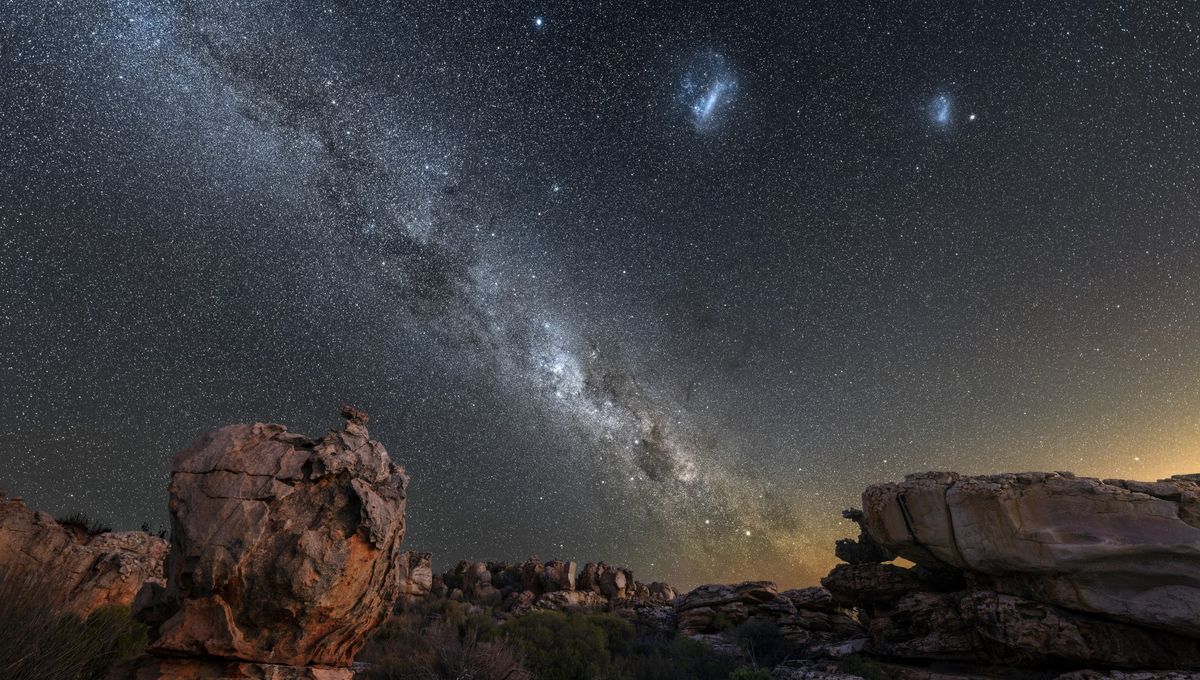
The universe is big, and thanks to innovation and technology, we have seen some of it across incredible distances, all the way to some of the most distant galaxies and the first light that ever shone, the cosmic microwave background. It is undeniable that telescopes have been fundamental to understanding space, but it doesn’t mean that our naked eyes are completely useless when it comes to looking into the cosmos. We can actually see much further than you might expect.
It all boils down to the apparent brightness of an object, or in astronomical parlance, its apparent magnitude. There are stars whose real luminosity would make the Sun look pathetically dim, but they are so far away that we can’t see them without observatories.
What you can see depends on both your physiological capabilities and the light conditions around you. The average person under very good dark sky conditions can see stars up to a 6 magnitude; any higher value and they are too dim unless you have extremely good eyesight and ideal darkness. There are roughly 9000 stars with an apparent magnitude less than 6, but which one is the furthest is quite the debate for two important reasons.
The most distant star visible to the naked eye
Many stars, especially bright stars, are variable: they change how luminous they are over time. For the scope of our search, we need a very bright object, something maybe a few 100,000 times the luminosity of the Sun. So, the apparent magnitude of this object might not always fit the “visible” criteria.
The other issue is how certain we are of the distance. The European Space Agency’s Gaia satellite has composed the best map yet of the Milky Way, tracking the position and motion of billions of stars. Those positions come with statistical uncertainty, adding further unknowns to our quest.
Based on Gaia data, there have been several good claims. One often repeated is V762 Cassiopeiae, at the limit of magnitude, but most likely just 2,500 light-years away. More excitingly is Rho Cassiopeiae, a rare yellow hypergiant star, over 300,000 times more luminous than the Sun and 8,000 light-years away. In the same constellation, Phi Cassiopeiae is made of multiple stars, and when combined, they have an apparent magnitude of 4.95. This system is up to 15,000 light-years away.
Most distant cosmic object you can see without a telescope
Maybe we can ignore the stellar problem if we expand our parameter. Can we see other galaxies with the naked eye? The answer is yes. With good eyesight and great sky conditions, you can see Andromeda, which is 2.5 million light-years away. Some can even see M81, which is almost 12 million light-years away, and M83, which is 15 million light-years away.
The record breaker, though, is another event altogether. It’s a gamma ray burst, the extremely energetic release of light in gamma-rays following a supernova or neutron star collision. The particular event known as GRB 080319B that took place on March 19, 2008, reached a visual apparent magnitude of 5.8 for 30 seconds. The light of this event had to travel for 7.5 billion years to reach us. While there have been more energetic GRBs since, none have beaten this one in being visible to the naked eye.
If your eyesight doesn’t allow for the faint galaxies and you do not have time to constantly scan the sky for the occasional GRB, you might need something else. The guaranteed most distant light you can get into your eyes and in abundance is from the Large and Small Magellanic Clouds, two small galaxies that orbit the Milky Way. They are visible in the Southern Hemisphere even in less-than-ideal conditions, and are over 160,000 light-years away.
How special that you can look up and these photons have traveled across the darkness of space just to hit the back of your very eyes; a cosmic connection linking you to stars far beyond the boundary of our galaxy.
Source Link: How Far Into The Universe Can You See With Your Naked Eye?